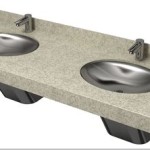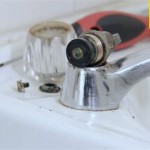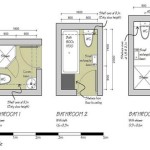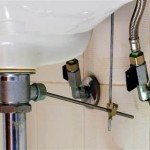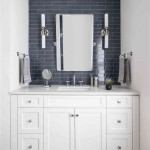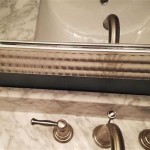How Much Does It Cost To Remodel A Bathroom?
Remodeling a bathroom represents a significant investment for homeowners, and understanding the associated costs is crucial for effective budgeting and project planning. The price of a bathroom remodel can vary widely depending on several factors, including the scope of the project, the quality of materials selected, the geographical location, and whether professional contractors are employed. This article provides a comprehensive overview of the various cost components involved in a bathroom remodel, offering insights into potential expenses and strategies for managing the budget.
Before embarking on a bathroom remodel, it is essential to define the project's scope. A simple cosmetic upgrade involving minor changes like painting, replacing fixtures, and updating accessories will naturally cost less than a complete overhaul that entails moving plumbing, altering the layout, and replacing major components like the bathtub or shower. Accurately defining the scope helps in setting realistic expectations and obtaining accurate cost estimates.
The ultimate cost of a bathroom remodel is influenced by numerous interconnected variables. By understanding these variables, homeowners are better positioned to navigate the remodeling process and make informed financial decisions that align with their budgets and preferences.
Key Factors Influencing Bathroom Remodel Costs
Several primary factors contribute to the overall cost of a bathroom remodel. These include the size of the bathroom, the complexity of the design, the materials chosen, labor costs, and any unforeseen issues that arise during the project.
Bathroom Size: The square footage of the bathroom directly impacts the cost of materials and labor. Larger bathrooms require more materials for flooring, tiling, and wall coverings. Labor costs may also increase due to the larger surface area to be covered and the increased time required for installation.
Design Complexity: Simple bathroom remodels focusing on cosmetic upgrades are less expensive than complex remodels that involve structural changes or plumbing relocations. Intricate designs with custom features, such as curved walls, built-in shelving, or elaborate tile patterns, can significantly increase costs due to the specialized labor and materials required.
Materials: The choice of materials is a major driver of cost in a bathroom remodel. High-end materials such as natural stone, designer tiles, custom cabinetry, and premium fixtures will naturally increase the budget. Conversely, opting for more affordable alternatives like ceramic tile, stock cabinetry, and standard fixtures can help keep costs down.
Labor Costs: Labor costs typically account for a significant portion of the total remodel budget. The hourly rates of plumbers, electricians, carpenters, tilers, and painters can vary based on their experience, expertise, and geographic location. Hiring licensed and insured contractors generally results in higher labor costs but provides assurance of quality workmanship and compliance with building codes.
Unforeseen Issues: Unexpected problems, such as hidden water damage, asbestos abatement, or outdated wiring, can arise during a remodel and lead to additional expenses. It is prudent to allocate a contingency fund, typically 10-15% of the total budget, to cover these unforeseen issues.
Breakdown of Common Bathroom Remodel Expenses
To provide a more granular understanding of bathroom remodel costs, it is helpful to examine the individual expense categories. These typically include demolition and disposal, plumbing, electrical work, flooring, tiling, fixtures, cabinetry, countertops, painting, and ventilation.
Demolition and Disposal: The initial step in a bathroom remodel often involves demolishing existing structures and disposing of debris. Demolition costs can range from a few hundred dollars for a small bathroom to several thousand dollars for a larger, more complex space. Disposal fees also need to be factored in.
Plumbing: Plumbing work can be a significant expense, especially if the layout is being altered or if new fixtures are being installed. Costs include moving pipes, installing new supply lines and drains, setting up the toilet, sink, bathtub, and shower, and ensuring proper drainage and water pressure. This can range from $500 to $5,000 depending on the extent of the plumbing work.
Electrical Work: Electrical work is another crucial aspect of a bathroom remodel, involving the installation of new wiring, outlets, lighting fixtures, and exhaust fans. Ensuring compliance with electrical codes is essential for safety. The cost of electrical work can range from several hundred dollars for simple upgrades to several thousand dollars for more extensive renovations involving new circuits and wiring.
Flooring: Flooring options for bathrooms include tile, vinyl, laminate, and stone. Tile is a popular choice due to its durability and water resistance. The cost of flooring depends on the material chosen, the size of the bathroom, and the complexity of the installation. Material costs can range from $3 to $30 per square foot, and installation costs can add another $5 to $15 per square foot.
Tiling: Tiling is commonly used for shower walls, backsplashes, and accent walls. The cost of tiling depends on the type of tile, the size of the area to be tiled, and the complexity of the design. Premium tiles and intricate patterns will increase costs. Similar to flooring, material costs can vary greatly, and installation can add significantly to the overall expense.
Fixtures: Bathroom fixtures include toilets, sinks, bathtubs, showers, and faucets. The cost of fixtures can range from a few hundred dollars for basic models to several thousand dollars for high-end designer options. The choice of fixtures should consider both aesthetics and functionality.
Cabinetry: Bathroom cabinets provide storage and enhance the overall look of the space. Costs vary depending on whether stock, semi-custom, or custom cabinets are chosen. Stock cabinets are the most affordable option, while custom cabinets offer the most flexibility in terms of design and size. Consider also vanity costs and installation, which will further alter the budget.
Countertops: Countertop materials include laminate, solid surface, quartz, granite, and marble. Each material has its own price point and aesthetic appeal. Granite and quartz are popular choices due to their durability and resistance to staining. Slab installation can be significantly more expensive.
Painting: Painting the walls and ceiling is a relatively inexpensive way to refresh the look of a bathroom. However, the cost can increase if extensive surface preparation is required or if specialized paints are used. Hiring painters or taking on this part of the task can significantly impact the final cost.
Ventilation: Proper ventilation is essential in a bathroom to prevent moisture buildup and mold growth. Installing or upgrading an exhaust fan is a relatively minor expense but an important investment in the long-term health of the bathroom.
Strategies for Managing Bathroom Remodel Costs
Homeowners can employ several strategies to manage the costs of a bathroom remodel without compromising on quality or functionality. These include setting a realistic budget, prioritizing needs over wants, obtaining multiple quotes, considering DIY options, and being flexible with design choices.
Setting a Realistic Budget: Before starting a bathroom remodel, it is essential to establish a realistic budget based on research and consultation with contractors. This budget should include a contingency fund to cover unforeseen expenses.
Prioritizing Needs Over Wants: Distinguish between essential upgrades and optional features. Focus on addressing functional needs, such as fixing plumbing issues or improving ventilation, before indulging in cosmetic enhancements.
Obtaining Multiple Quotes: Obtain quotes from at least three to five different contractors to compare prices and services. Ensure that each quote provides a detailed breakdown of costs, including materials and labor.
Considering DIY Options: If comfortable with basic home improvement tasks, consider tackling certain aspects of the remodel, such as painting, demolition, or installing simple fixtures. This can significantly reduce labor costs. However, more complex work should be left to professionals to ensure safety and compliance with building codes.
Being Flexible with Design Choices: Be open to alternative materials and design choices that can help reduce costs. For example, consider using ceramic tile instead of natural stone or opting for stock cabinets instead of custom-made ones.
Ultimately, the cost to remodel a bathroom depends on a multitude of choices and specifications. Careful planning, realistic budgeting, and informed decision-making are critical to achieving a successful and affordable bathroom remodel.

How Much Does A Bathroom Remodel Cost 2024 Data Angi

2024 Shower Remodel Cost Calculator Modernize

Bathroom Renovation Cost How Much To Budget For A Remodel

Bathroom Remodeling Costs In New Jersey 2024 Sweeten Com

Calculator How Much Does It Cost To Remodel A Bathroom

Palmer Residential How Much Does A Bathroom Remodel Cost

How Much On Average Does It Cost To Remodel A Bathroom Janssen Glass

Bathroom Workbook How Much Does A Remodel Cost

Bathroom Remodeling Costs In Chicago 2024

Understanding Small Bathroom Remodel Costs And How To Save
Related Posts
